Toyota Investing $500 Million Into Uber for Driverless Partnership
Toyota Motor Corp. is set to drop about $500 million into Uber Technologies Inc. under an agreement that will see both companies work jointly on self-driving vehicles. The ultimate goal is for Toyota to bring to market its own autonomous vehicles using some of Uber’s hardware, with direct access to its ride-sharing network.
According to the automaker, the initial push will use the Sienna minivan as a platform for the “Autono-MaaS” (autonomous-mobility as a service) fleet. This makes the arrangement sound very similar to Waymo’s deal with FCA, which allows Alphabet’s autonomous arm to use the Chrysler Pacifica as a test platform for its self-driving hardware in exchange to having improved access to autonomous technology. However, Toyota said the partnership’s primary goal is improving safety and lowering transportation costs for the public.
Public Becoming More Apprehensive About Robotic Cars, Here's Our Best Guess as to Why
A little knowledge is a dangerous thing. Despite the public having become more aware of autonomous vehicles over the last several years, acceptance of the technology appears to be at an all-time low.
According to a recently published survey from Cox Automotive, general knowledge of self-driving cars has grown over the last two years by around 20 percent to 78 percent of a sample audience. However 68 percent of those respondents also felt the technology was potentially unsafe, which represents a nearly 20 percent increase within the same timeframe.
Likewise, general apprehension grew alongside the level of driving autonomy with complete computerized control being the scariest and 84 percent of the sample saying human drivers should always have the ability to take over when they wanted. The public appears to be turning against self-driving vehicles and automakers are going to need to figure out why because these findings are not an isolated incident.
Autonomous Tech Won't Displace Truckers, Biased Studies Claim
Last year, the Center for Automotive Research said robotic vehicles will eventually displace professional drivers in figures that will be “certainly in the millions.” Meanwhile, Goldman Sachs predicted trucking job losses of 25,000 per month as autonomous vehicles roll out in earnest. Truckers are going to end up like pinsetters and switchboard operators — saddled with a career that have been nullified thanks to automation, until they become extinct. However, we’ve also heard there’s a lack of manpower within the industry and that’s helping spur development.
This year, a glut of new studies emerged that suggest self-driving vehicles will actually benefit truckers. Unfortunately, they all come from sources that really want you to be stoked with the technology.
Uber Killing Off Autonomous Trucking Division
Uber is shutting down its self-driving trucks unit due to a lack of progress and the controversy surrounding its multi-million dollar acquisition of Otto in 2016. The firm was purchased with the intent of developing self-driving cargo haulers, potentially saving the trucking company a fortune by outsourcing driving jobs to robots. But it was slow to reach that goal and ran head-on with a serious distraction almost immediately.
Initially, things looked promising. Otto was famous for engineering a truck that hauled a trailer full of beer across 120 miles of Colorado highway without human intervention. But it found a different sort of fame after its founder, Anthony Levandowski, took over as head of Uber’s self-driving car research and Waymo faulted him with handing over trade secrets.
As a former engineer for Google’s autonomous vehicle project (which would later evolve into Waymo), Levandowski was privy to sensitive information he was later accused of selling as part of the Otto buyout.
No Parking Required: Waymo Launches Shuttle Service to Walmart
Remember how everyone talked about autonomous vehicles like they would deliver humanity into a cleaner, safer future where all the disgusting trappings of our past would be a distant memory? It’s not playing out quite like that. In fact, as the reality of self-driving cars inches ever closer, we’re seeing weird corporate partnerships and companies looking to make a buck anywhere they can as the consumer serves double duty as master and commodity.
If you need a present-day example, look no further. Waymo, the autonomous arm of Google parent Alphabet Inc., is launching a pilot program this summer that intends to shuttle passengers to Walmart and other partner locales. Members of the firm’s “early rider program” will be able to catch a ride to the retail outlet after using its online component to place an order (which qualifies them for discounts in the future).
While the goods are being prepared at the store, Waymo will dispatch a self-driving Chrysler Pacifica to the customer in order to bring them to it — sort of like a reverse delivery service. However, Walmart is far from the only corporate partner Waymo has right now.
Ford Commits $4 Billion to the Future, Creates New AV Subsidiary
Ford Motor Company announced Tuesday that it has formed formed a subsidiary — Ford Autonomous Vehicles LLC — devoted entirely to autonomous vehicle development. That’s probably the catchiest name we’ve heard since Bank of America Corp or Waste Management Inc. However, you don’t need a clever moniker when you’re dumping $4 billion into a project, which Ford intends to do through 2023.
With all the current drama and distrust surrounding self-driving cars, we thought there was a chance automakers would cool off on pushing for it so aggressively. But while some OEMs curbed their futuristic rhetoric ever so slightly, practically everyone else kept the pedal to the metal — an analogy that will lose all meaning once computers drive us everywhere.
Let’s see what The Future™ looks like in and around Dearborn.
NHTSA Deputy Administrator: There's No Need to Regulate Autonomous Cars
Heidi King, deputy administrator of the National Highway Traffic Safety Administration, claims it’s too soon to begin imposing rules on self-driving vehicles. Thus far, the NHTSA as taken a supremely lax posture on handling autonomous vehicles in the hopes that a softer touch will assist in their swift development.
However, a cluster of fatal incidents involving advanced driving technology created fresh paranoia within the government.
While the argument could be made that those accidents demand a response from federal regulators, it’s also clear the government doesn’t have a firm grasp on the technology. Likewise, there’s little consensus among automakers that have only recently begun discussing how these vehicles should be standardized, and loads of conflicting opinions exist on the matter of safety. In the short term, advanced electronic aids allow motorists to become worse at driving. But, if fully autonomous vehicles function as intended, their long-term safety benefits could be immense.
The NHTSA claims the resulting confusion means it’s too early in the process to make any kind of definitive rulings.
Should Police Have the Ability to Track and Disable Self-driving Vehicles?
Autonomous vehicles have created an endless series of unanswerable questions. As the technology continues to advance, decisions on how best to implement it have not. We’ve yet to discern who is liable in the event of an accident, how insurance rules would change, if they can coexist effectively with traditional automobiles, how they will impact vehicle ownership in the long term, and the infrastructure necessary to ensure they’ll function as intended.
There’s also a myriad of security concerns involving everything from the very real prospect of vehicle hacking to automakers selling the personal information of drivers. Both of those topics are about to come to a head as automakers continue shifting toward connected vehicles.
In March, the U.S. Transportation Department met with auto industry leaders, consumer advocacy groups, labor unions, and others in an attempt to navigate the minefield that is autonomous integration. The department previously hosted similar roundtable discussions in December after releasing the new federal guidance for automated driving systems, called “ A Vision for Safety 2.0.” That guidance freed up automakers and tech firms to test self-driving vehicles with fewer regulatory hurdles to cope with.
However, the December report seemed to focus mainly on how little everyone outside the industry understands the new technology.
Maybe Autonomous Vehicles Don't Have to Look Like Steaming Sacks of Garbage
Thank God we don’t have to look at that Google self-driving car anymore. You know the one — shaped like an unhappy egg wearing a little hat? That one. The one that inspired visions of a future where life is so sterile and miserable that it wouldn’t be hard to imagine masses of people throwing themselves on the road in front of these pod-like commuting appliances.
Still, even as self-driving technology advances, we’re treated to concept vehicles that don’t exactly stir the soul. Some recent designs deserve kudos, but many still resemble motor pool rejects from A Clockwork Orange, terrifying gearheads and libertarians alike.
It doesn’t have to be that way, claims one automotive supplier. You can have your sexy car and still tell it to drive you around.
BMW Rep: Government May Never Allow for Autonomous Cars, Computerized Life and Death Decisions
BMW’s past promises include a pledge to help keep drivers driving in the brave new world of autonomous vehicles. However, it hasn’t entirely sworn off self-driving technology. The company finds itself in a tricky spot, as it’s seen as both a luxury automaker and a performance brand. But it can’t claim to be “The Ultimate Driving Machine” if it doesn’t allow customers to drive.
Automakers and tech firms pushed relentlessly for autonomous driving, making claims that a self-driving nirvana was just around the corner. But current technology proved less than perfect in practice and modern autonomous vehicles require constant human involvement to operate safely, just like any normal car. Despite making strides, the industry seems torn on how to appease everyone.
The government is even more in the dark. While lawmakers initially agreed with industry rhetoric (that autonomy will save lives and usher in a new era of mobility), recent events sparked skepticism. There aren’t many new regulations appearing in the United States, but there also isn’t any clear legislation to help decide who’s held liable when the cars malfunction. A lot of what if questions remain unanswered.
BMW thinks this will be the main reason why autonomous cars fail.
Uber Driver May Have Been Watching TV Before Fatal Collision: Police
The mash-up of fledgling technology that requires human vigilance to ensure safety and our natural inclination to become distracted by mobile devices appears to be the cause of the fatal Tempe, Arizona Uber crash in March.
According to a lengthy police report obtained by Reuters, the driver of the autonomous Volvo XC90 operated by Uber Technologies may have been watching the TV show The Voice in the moments leading up to the collision. The impact killed 49-year-old Elaine Herzberg, who was crossing the darkened street with her bicycle.
Train Station 2.0: Ford's Corktown Redevelopment Plan Unveiled, Won't Replace Dearborn
All eyes were on the now Ford-owned Michigan Central Station in Detroit’s Corktown neighborhood on Tuesday morning, as the automaker formally announced its plan for the derelict building and surrounding neighborhood.
Ford Motor Company recently took the century-old structure, abandoned since 1988, off the hands of its longtime owners, the Moroun family. There’s still no dollar figure attached to that deal, but that’s not what Tuesday was about. Ford’s plan, ambitious and big on vision, breaks down as this: there’ll be 2,500 Ford workers employed in the Corktown neighborhood, tasked with developing autonomous vehicles and related tech. The towering train depot, once restored, will serve as the nerve center.
Joining those employees in Ford-owned buildings scattered around the site will be an equal number of employees working for partners and suppliers, or so Ford hopes. The automaker’s aiming for a miniaturized version of Silicon Valley clustered around Michigan Avenue.
GM Looking at Ways of Squeezing Cash Out of Cruise: Report
The small San Francisco startup bought by General Motors in 2016 could generate a lot of money for the automaker in the near future.
According to sources who spoke to Bloomberg, GM wants to unlock the value of its self-driving Cruise Automation division (officially GM Cruise LLC) — a 50-person company valued at $600 million at the time of purchase. Japan’s SoftBank, which recently pledged a $2.25 billion investment in the division, now values Cruise at $11.5 billion.
To put that figure into context, GM’s market capitalization hovers around $50 billion. The word “Cruise” should be accompanied by an old-timey cash register sound.
For All Its Talk of Mobility, Ford Says It's Fine With FCA and GM Leading the Robocar Pack
If recent statements from Ford Motor Company were any indication, you’d think we were living in some futuristic society where our grandparents drove Nucleons and the need for a personal vehicle was almost nil. Yes, too much “mobility” talk gets under the skin.
That said, it’s Ford’s domestic rivals who are actually building and fielding production vehicles that drive themselves — and setting up businesses and partnerships that could make the automakers a bundle on the side. By next year, both General Motors and Fiat Chrysler could have self-driving vehicles roaming America, earning their companies money.
Be our guest, Ford claims. There’s bigger things to worry about.
Musk Is Right About the Media, Rocket-powered Roadsters and Tesla Version 9 Edition
Tesla Motors CEO Elon Musk is correct in asserting just how poorly the media covers his company. We know that because, after he tweeted that Version 9 of the company’s software would allow the firm to begin enabling “fully self-driving features,” numerous outlets started claiming complete driving autonomy was just around the corner. We hate to be the bearer of bad news, but that isn’t what’s happening.
To be fair, much of the confusion came via headlines suggesting Musk had explicitly promised a fully self-driving vehicle. While that’s not even close to what he did, we understand that it’s a heading too tempting for many to refuse. We’re betting Elon grasps this concept as well, which is why he chose his wording so carefully. Frankly, the CEO probably comprehends the media far better than the media understands his company, and he regularly uses this to his advantage.
While several outlets clarified that Tesla was actually implementing a software update (with unclear ramifications in the body of their text), plenty glossed over that aspect of the story. Instead, they decided to tack on Musk’s earlier promise that the Tesla Roadster would be offered with a SpaceX package — 10 small rocket thrusters to improve the vehicle’s dynamics.
Super Cruise Coming to Rest of Cadillac in 2020, Conspiracy Theories Coming by 2023
General Motors intends to start offering its hands-free driving system, Super Cruise, across the entire Cadillac lineup by 2020. The technology, already available on the CT6, allows motorists to take a semi-passive role on the highway. Once GM’s luxury brand is sorted, the system will become available on other makes.
If you like the idea of a car that can take you out of the commute a bit and don’t mind the idea of a small camera permanently pointed directly at your face, then this is probably very exciting news.
While Super Cruise is frequently compared to Tesla’s Autopilot, the two operate differently. General Motors’ system does indeed allow for a similar hands-free experience, but the onboard camera tracks the driver’s eyes to ensure they remain relatively attentive to the road ahead. Meanwhile, Autopilot allows drivers to ignore almost everything so long as they’re willing to regain control of the vehicle when asked. The difference between the two is that the onus of safety remains slightly more with the driver with Super Cruise.
Japan's SoftBank Dumps Cash Into America's Autonomous Vehicles, Sets GM Deadline for 2019
Several months after procuring a large ownership stake in Uber, SoftBank has placed $2.5 billion into General Motors’ self-driving program. The automaker intends to begin deploying autonomous vehicles next year and CEO Mary Barra says her company will invest $1.1 billion of its own funds into the effort to ensure the timeline is adhered to.
Thanks to the hefty investment from SoftBank’s Vision Fund, the Japanese holding company now owns roughly 20 percent of General Motors’ tech subsidiary, known as Cruise Automation. While tech firms and automakers have been driving hard to surpass each other in terms of autonomous development for years, GM currently appears to have the most riding on the hardware.
'They Will Grow Older': Jaguar's Product Boss Is Damn Sure Millennials Will Eventually Choose Self-Indulgence
Teen car culture is dying a swift death, The Atlantic claims, but Jaguar Land Rover’s head of product strategy feels the youngsters of today will eventually outgrow their desire for hassle-free autonomous commute pods.
As a great Jaguar print ad in the 1990s once stated, “Live Vicariously Through Yourself.”
In Hanno Kirner’s mind, this mantra will guide more than a few Millennials to take over the driving duties and indulge their innermost desires. It had better.
NTSB Releases Preliminary Report on Fatal Uber Crash; Vehicle 'Saw' Victim 6 Seconds Before Impact
The Volvo XC90 that hit Elaine Herzberg on a darkened Tempe, Arizona street was travelling 43 mph at the time of impact. Guided by a combination of cameras, radar sensors, and lidar designed to cut through the gloom, the two-ton SUV “saw” the victim 6 seconds before impact, according to a preliminary report released by the National Transportation Safety Board.
The Volvo, operated by Uber Technologies, applied the brakes 1.3 seconds after impact. However, it wasn’t autonomous software that ended up sending pressure the front and rear pistons. A human did that.
Uber Pulls the Plug on Autonomous Vehicle Testing in Arizona
The area around Phoenix, Arizona can say goodbye to the fleet of self-driving Volvo SUVs operated by Uber Technologies. The ride-sharing company, which suspended all on-road autonomous vehicle testing after a fatal pedestrian collision in March, has announced it’s shutting down its operations in that state.
Up to 300 employees stand to lose their jobs.
While the departure hints at a newfound culture of caution and discipline at Uber, it isn’t terminating its self-driving program altogether, nor will its conventional services leave Arizona. The company’s self-driving vehicles could be on the road again this summer.
Camera-guided Ford Fusion Sails Through Red Light; Supplier Blames … Other Cameras
Mobileye, the Israeli company that supplies camera-based driver assist technology to a host of automakers, just received a black eye.
While one of its Ford Fusion Hybrid testbeds cruised through the streets of Jerusalem to show off its autonomous driving abilities, the sedan, equipped with 12 cameras (three of them forward facing), four advanced EyeQ4 chips, and a television audience, drove merrily through a red light.
It’s technically not the car’s fault, Mobileye said. It’s the TV crew’s.
In Wake of Crashes, Public Confidence in Self-driving Cars Pulls a U-Turn
Following a Wild West-like expansion in autonomous vehicle testing, coupled with years of rosy predictions from automakers and Silicon Valley types, the public seemed ready to embrace self-driving cars with open arms.
Opinion polls showed significant distrust in the technology, but least among young adults, the idea of self-driving cars remained a popular one. That’s changed, apparently.
Report: Self-driving Uber Vehicle Involved in Fatal Collision Saw, Ignored Pedestrian
The fatal collision between an autonomous Volvo XC90 operated by Uber Technologies and 49-year-old Elaine Herzberg in March could have been prevented, had the vehicle’s software not dismissed what its sensors saw.
That’s what two sources briefed on the issue told The Information, but Uber isn’t divulging what led to the Tempe, Arizona collision. What it will admit to, however, is the hiring of a former National Transportation Safety Board chair to examine the safety of its self-driving vehicle program.
Thwarted on the On-ramp: Waymo Driverless Car Doesn't Feel the Urge to Merge
Tempe, Arizona, that sunny hotbed of autonomous vehicle testing, made headlines earlier this year after a driverless Volvo XC90 operated by Uber Technologies struck and killed a woman crossing a darkened street. The “driverless” vehicle, which had a (distracted) Uber employee behind the wheel, apparently didn’t see the victim. Uber suspended testing after the incident.
Now, Tempe’s making headlines again. A Waymo-operated Chrysler Pacifica found itself the victim of a collision on Friday afternoon, but it’s the behaviour of another Waymo minivan — caught on video by another motorist — that’s generating the most interest today.
Pentagon Joins Tech Startups in Race for Autonomous Vehicles
It’s been a rough road for autonomous vehicles. Despite development progressing significantly over the last decade, tech companies and automakers have been confronted with a myriad of issues. There have been intellectual property lawsuits, public safety concerns, and a recent backlash from government officials who are starting to wonder if the entire concept has been oversold.
However, the government still wants self-driving cars, especially the Pentagon. The Defense Advanced Research Projects Agency (DARPA) has been researching autonomous cars since the technology was in its infancy and, with so many firms trying to bring the technology to market, the military sees no reason it shouldn’t be the first.
It’s not like it doesn’t have the money.
Toyota Confirms 'Talking' Cars for 2021
Toyota wants to be a leader in the connected vehicle field and is encouraging all automakers to utilize dedicated short-range communications (DSRC) on all of vehicles sold in the United States — especially after it has already decided to do so with its own fleet. The brand has said it will be building talking cars by 2021. But they won’t talk in the same sense as a 1987 Chrysler New Yorker constantly reminding you that the door is ajar in a Speak & Spell voice, nor will they communicate with you like modern-day vehicles equipped with Amazon’s spyware intelligent personal-assistant service.
Instead, they’ll be talking to each other via a dedicated channel for vehicle-to-vehicle (V2V) communications. Toyota and Lexus intend to start equipping models with the technology in 2020, hoping to have it on most models by the following year. But it wasn’t the first to pitch the idea. The Federal Communications Commission allocated specific bandwidths for car chatter in 2017 and Cadillac has been talking about V2V for years.
Tesla and NTSB Squabble Over Crash; America Tries to Figure Out How to Market 'Mobility' Responsibly
The National Transportation Safety Board, which is currently investigating last month’s fatal crash involving Tesla’s Autopilot system, has removed the electric automaker from the case after it improperly disclosed details of the investigation.
Since nothing can ever be simple, Tesla Motors claims it left the investigation voluntarily. It also accused the NTSB of violating its own rules and placing an emphasis on getting headlines, rather than promoting safety and allowing the brand to provide information to the public. Tesla said it plans to make an official complaint to Congress on the matter.
The fallout came after the automaker disclosed what the NTSB considered to be investigative information before it was vetted and confirmed by the investigative team. On March 30th, Tesla issued a release stating the driver had received several visual and one audible hands-on warning before the accident. It also outlined items it believed attributed to the brutality of the crash and appeared to attribute blame to the vehicle’s operator. The NTSB claims any release of incomplete information runs the risk of promoting speculation and incorrect assumptions about the probable cause of a crash, doing a “disservice to the investigative process and the traveling public.”
QOTD: Are These Crazy Canucks Onto Something?
A great number of us here at TTAC distrust autonomous vehicles, the predictions surrounding them, and — for reasons that become clearer with every reported mishap — most of the companies peddling this technology as a way of making our roads death- and traffic-free about 48 minutes from now. Or is it two years? These predictions come and go.
If we’ve learned anything recently, it’s that some companies place greater trust in their fledgling technology than they should, and that citizens would be right to take their forward-thinking claims with a heaping of salt.
An interesting poll just emerged from the snowy wastes of Canada, one that fills this author with a newfound trust in his countrymen countrypeople. Depending on where you live, you either can’t wait for the autonomous revolution, or you don’t trust it at all. Apparently, no country is more skeptical than Canada.
Old Man Lutz Gives Dealerships 20 Years to Live, Doubles Down on Driving Dystopia
Longtime auto executive Bob Lutz has always been an incredibly outspoken individual. His years of hard work have given him an insight into the industry that few possess, and he’s only become more willing to share that information as he ages. Like the industrious caterpillar, his ceaseless labor has allowed him to metamorphose into what is arguably his perfect form near the end of his lifecycle — a candid automotive butterfly.
We love hearing anything has to say, as his insight borders on the surreal, but with more than enough truth to come to pass. Last year, he divined a future where the car as we know it is destroyed by governmental regulation and advanced technologies. The dystopian plot seemed impossible upon a cursory glance, but the deeper you drive, the more plausible it begins to seem.
Lutz refocused this week at the SAE International WCX World Congress Experience in Detroit, saying the traditional dealer model will be among the first things to go in the brave new world of mobility. He called car dealerships an “endangered species,” suggesting to the crowd that it had “another 20 to 25 years before it’s all over.”
Waymo Comments on Autopilot Crash, Blames Driver
While the investigation into Tesla’s most recent Autopilot-rated fatality continues, Waymo chimed in to remind everyone that the company’s self-driving system isn’t actually self-driving at all. That almost makes it sound like the Google offshoot is coming to the defense of Tesla Motors. However, the truth of the matter is this was a golden opportunity for Waymo to sneak in another humblebrag that its autonomous technology is the genuine article and that most of its competitors are playing catch-up.
It’s a valid point. We shouldn’t forget that Tesla’s Autopilot is not representative of true autonomy and the burden of safety still falls squarely on the driver. But the manufacturer didn’t always market it that way, and only updated the system to require hands on the wheel after the first fatality. This incident is different from the recent Uber crash in Tempe, Arizona. But just how different is debatable and largely dependent on what qualifies as “self-driving” to the average person.
“Tesla has driver-assist technology and that’s very different from our approach,” explained Waymo CEO John Krafcik last week, before Tesla revealed that Autopilot was engaged during the Model X crash. “If there’s an accident in a Tesla, the human in the driver’s seat is ultimately responsible for paying attention. We don’t know what happened here, but there was no self-driving.”
Is Uber Putting It in Reverse on Autonomous Vehicles?
Is ride-hailing company Uber backing away from self-driving cars now that one of their test vehicles was involved in a fatality?
Following the death of a pedestrian hit by one of Uber’s experimental autonomous vehicles in Tempe, Arizona, the ride sharing company suspended the testing Uber was doing with AVs on public roads in Pennsylvania, Arizona, and California in the United States and Ontario in Canada. Now comes word that Uber has informed California’s Department of Motor Vehicles that it will not be renewing its license to test autonomous vehicles on that state’s public roads. That license expires at the end of this month.
Don't Expect a Landmark Court Case From the Uber Self-driving Car Death
It had all the hallmarks of a groundbreaking case, one that might define the hazy legal boundaries that exist at the dawn of the autonomous vehicle age. Instead, a settlement.
The death, earlier this month, of 49-year-old Elaine Herzberg at the self-guided hands of an Volvo XC90 operated by Uber Technologies Inc. in a Phoenix suburb immediately sparked questions of who was at fault. The company operating the pilot project? The automaker that supplied the vehicle for conversion to autonomous drive? The suppliers of the sensors and software needed to turn the SUV into a robot? Road and light conditions? The pedestrian? Or, perhaps, the human occupant whose eyes weren’t on the road prior to impact?
Questions still swirl around why the Uber vehicle’s sensors didn’t recognize the woman crossing a darkened highway with her bicycle, but we won’t hear them answered in a courtroom.
Self-driving Company Waymo to Buy Thousands of High-end, Sporty Jaguar EVs for Taxi Service
Let’s hope future robo-taxi passengers appreciate a sport-tuned suspension and crisp driving dynamics, because there’s a slim chance they’ll notice it when shuttling around in a driverless Jaguar.
On Tuesday, Waymo, autonomous car unit of Google, announced its intent to purchase up to 20,000 Jaguar I-Pace electric crossovers for its future fleet of AV EVs. Fitted with an array of self-driving hardware and software, Waymo says the cars will hit the road in 2020. Testing begins this year, which has us wondering what kind of wait a regular I-Pace customer faces.
Arizona, Suppliers Unite Against Uber Self-driving Program
Ever since last week’s fatal accident, in which an autonomous test vehicle from Uber struck a pedestrian in Tempe, Arizona, it seems like the whole world has united against the company. While the condemnation is not undeserved, there appears to be an emphasis on casting the blame in a singular direction to ensure nobody else gets caught up in the net of outrage. But it’s important to remember that, while Uber has routinely displayed a lack of interest in pursuing safety as a priority, all autonomous tech firms are being held to the same low standards imposed by both local and federal governments.
Last week, lidar supplier Velodyne said Uber’s failure was most likely on the software end as it defended the effectiveness of its hardware. Since then, Aptiv — the supplier for the Volvo XC90’s radar and camera — claimed Uber disabled the SUV’s standard crash avoidance systems to implement its own. This was followed up by Arizona Governor Doug Ducey issuing a suspension on all autonomous testing from Uber on Monday — one week after the incident and Uber’s self-imposed suspension.
LIDAR Supplier Defends Hardware, Blames Uber for Fatal Crash [Updated]
Parts supplier Velodyne Lidar Inc. has come out against Uber Technologies following the release of video footage showing one if its autonomous test vehicles fatally striking an Arizona woman this week. Marta Thoma Hall, president of Velodyne, said she was confused as to why the autonomous SUV failed to see 49-year-old Elaine Herzberg crossing the street.
Velodyne, which supplies autonomous sensing equipment to many of the world’s automotive and tech firms (including Uber), is currently cooperating with federal investigators to determine what happened in Tempe, Arizona, on Sunday evening.
Video of the Autonomous Uber Crash Raises Scary Questions, Important Lessons
On Wednesday evening, the Tempe Police Department released a video documenting the final moments before an Uber-owned autonomous test vehicle fatally struck a woman earlier this week. The public response has been varied. Many people agree with Tempe Police Chief Sylvia Moir that the accident was unavoidable, while others accusing Uber of vehicular homicide. The media take has been somewhat more nuanced.
One thing is very clear, however — the average person still does not understand how this technology works in the slightest. While the darkened video (provided below) does seem to support claims that the victim appeared suddenly, other claims — that it is enough to exonerate Uber — are mistaken. The victim, Elaine Herzberg, does indeed cross directly into the path of the oncoming Volvo XC90 and is visible for a fleeting moment before the strike, but the vehicle’s lidar system should have seen her well before that. Any claims to the contrary are irresponsible.
Unpacking the Autonomous Uber Fatality as Details Emerge [Updated]
Details are trickling in about the fatal incident in Tempe, Arizona, where an autonomous Uber collided with a pedestrian earlier this week. While a true assessment of the situation is ongoing, the city’s police department seems ready to absolve the company of any wrongdoing.
“The driver said it was like a flash, the person walked out in front of them,” explained Tempe police chief Sylvia Moir. “His first alert to the collision was the sound of the collision.”
This claim leaves us with more questions than answers. Research suggests autonomous driving aids lull people into complacency, dulling the senses and slowing reaction times. But most self-driving hardware, including Uber’s, uses lidar that can functionally see in pitch black conditions. Even if the driver could not see the woman crossing the street (there were streetlights), the vehicle should have picked her out clear as day.
GM Claims It Will Start Manufacturing Autonomous Cars Next Year
General Motors has announced it will begin manufacturing autonomous vehicles by 2019. Since purchasing Cruise Automation in 2016, GM has invested heavily into self-driving cars. However, its Chevrolet Bolt-based Cruise AV has only served as a testbed for the technology. That will change next year when the Orion Township assembly plant in Michigan starts building examples for commercial use.
If so, that would make General Motors the first company to sell an autonomous vehicle. However, it’s not entirely clear if that’s the ultimate goal. Thus far, GM has only said the autos will enter into a “ride-sharing environment” where the vehicles can be managed in a fleet — perhaps something akin to Uber.
Obviously, the analogy is as accurate as it is unfortunate. Uber recently suspended autonomous testing after one of its vehicles fatally struck a pedestrian earlier this week. While GM’s product planning can hardly be faulted for the goings-on at another company, the collision could see the general public wonder if production Cruise AVs are ready to take over the road.
Video: Google's Waymo Exhibits the Total Lack of Excitement Inside Driverless Cars
After getting the go-ahead from Arizona, autonomous tech firm Waymo has implemented the first ride-hailing service in the country that doesn’t employ human drivers. One month after securing approval, and with no major incidents to date, the company has begun offering its autonomous taxi service to paying passengers. On Tuesday, Waymo CEO John Krafcik gave a speech at South by Southwest (the indie music festival that evolved into a media and tech bonanza) to showcase how things were getting on.
He said Waymo ditched the Phoenix test drivers and is readying its fleet of driverless Chrysler Pacificas for other parts of the country. The festival was then treated to a short video of passengers yawning. Those yawns are actually trumpets, however, heralding the introduction of autonomous vehicles in North America.
Safety Group to Senate: Clue in to the 'Baseless and Exaggerated Predictions' Swirling Around Autonomous Vehicles
Last year, the National Highway Traffic Safety Administration embraced autonomous technology by redefining how it categorized cars. Spurred by automakers and tech companies, the government has opened its eyes to this new technology and seen it as a way to potentially save lives by reducing the number of roadway accidents caused by human error.
Congress has been confronted with numerous pieces of legislation on the matter, too — prospective laws that would allow automakers to put hundreds of thousands of autonomous vehicles on the street, without the need to adhere to existing safety regulations. Many have called the move necessary if the United States hopes to be the first country to produce a truly self-driving car and start saving some lives.
It sounds almost too good to be true, and some claim it actually is. A group of public interest organizations is attempting to sound the bullshit alarm, claiming automakers are misleading government officials in the hopes of developing and profiting from unproven technology.
Cadillac President Attributes 'Measured Approach' to Super Cruise Success, Gently Slams Tesla
Speaking at a conference in California on Wednesday, Cadillac President Johan de Nysschen threw some gentle shade at his rivals by stating General Motors’ measured approach to hands-free driving was the secret to Super Cruise being a winner. For those of you that don’t know, Cadillac claimed it became the first automaker to accomplish a coast-to-coast drive using hands-free technology last fall.
While it’s debatable whether the Super Cruise equipped CT6s making the journey actually achieved the feat without a driver ever having to touch the steering wheel, GM’s semi-autonomous system is among the best in the business right now — if not the best.
How did it manage the feat? For the most part, Cadillac built on the technology it already had to fine-tune adaptive cruise control to a point where the car could effectively steer itself on predictable highway jaunts. But de Nysschen says it mastered that in a closed environment, waiting until the system was completely ready. Meanwhile, other areas of General Motors have been devoted to total autonomy and perfecting the Cruise Automation fleet’s artificial intelligence systems.
Cool It With the Names Already: From Volkswagen, a 'Vizzion' of the Future
You probably remember the old Jerry Seinfeld routine about ridiculous car names.
“Integrity? No, Inte-grah.”
In a just world, Volkswagen’s naming policy for its electric concept cars would see the company hauled before the courts on charges of crimes against the English language. However, it’s mainly a free world, and we’ll just have to grin and bear the fact that VW’s latest concept calls itself the I.D. Vizzion — surely the worst name in a line of upcoming cars that started with the I.D. and moved on to the I.D. Crozz and I.D. Buzz.
Occupants of the Vision Vizzion, should it one day become reality, won’t ever use their hands for steering, but they’ll certainly use them to talk to the car.
Automated Cars Are Not Able to Use the Automated Car Wash
We’ve been cautiously optimistic about the progress of autonomous driving. The miraculous technology is there, but implementing it effectively is an arduous task of the highest order. A prime example of this is how easy it is to “blind” a self-driving vehicle’s sensors.
TTAC’s staff has had its share of minor misadventures with semi-autonomous driving aids, be it during encounters with thick fog or heavy snow, but truly self-driving cars have even more sensitive equipment on board — and all of it needs to function properly.
That makes even the simple task of washing a self-driving car far more complicated than one might expect, as anything other than meticulous hand washing a big no-no. Automated car washes could potentially dislodge expensive sensors, scratch them up, or leave behind soap residue or water spots that would affect a camera’s ability to see.
Please Stop: Toyota Design Head Envisions Future Without Mass-market Automobiles
It’s starting to feel like people in the automotive industry simply cannot help but blurt out ludicrous claims involving a hypothetical future nobody on the outside seems to care about. These people, in charge of the the automobile’s ultimate form, appear to be so singularly obsessed with the vague concept of “mobility” that they can’t imagine any other alternative.
This week’s example came from Simon Humphries, the new general manager of Toyota’s advanced R&D, who mused about a tomorrow that didn’t need mass-market models. However, we’re not satisfied to condemn the design chief. Media outlets deserve a share of the blame for promoting these concepts without much logical backing.
Hide and Seek: GM Seeks Patent for Vehicle-to-Pedestrian Communication
Here at TTAC, we sometimes offer up a story published by a sister publication after deciding it’s something worthy of your time. This piece, published by GMInsideNews, fits that bill. While the soulless autonomous future scares many of us, General Motors is working on a way to stop those driverless cars from plowing over each and every one of us. Read on.
General Motors continues to pour money and time into perfecting vehicle autonomy.
One of the integral themes of an autonomous driving future is communication. Vehicles will be required to rapidly and constantly talk to one another, relaying position, speed, and intent, with the same demands applying to our roadways and intersections — which will be expected to relay weather, traffic, and safety information in real time as vehicles approach.
Pedestrians, however, pose a unique problem. In busy cities, pedestrians and drivers routinely communicate nonverbally by making eye contact or gesticulating, but an autonomous vehicle doesn’t have that privilege. Its machine code is dependant on a series of binary questions it must ask itself in order to determine if the person is a threat, which — if affirmative — currently results in the car coming to a halt, which on occasion has caused a rear-end collision, or two.
Well, GM is working on a system in which autonomous vehicles will be capable of better understanding the motions of pedestrians by communicating with their Internet-connected devices, be it smart-phones, wearables, or perhaps even future advancements made towards transhumanism.
Waymo to Purchase 'Thousands' of Chrysler Pacificas for Self-driving Duty
Waymo, the self-driving division of Google’s parent company Alphabet, just announced it has reached a deal to purchase a buttload of Pacifica minivans from Fiat Chrysler Automobiles. Alright, to be fair, it didn’t actually use the term “buttload.” It said Chrysler would provide “thousands” of units, which will ultimately be outfitted for autonomous driving.
Unfortunately, neither company seems willing to disclose an official count. Waymo currently has around 600 self-driving Pacificas in its fleet, so even an extra thousand vehicles would equate to a multi-million dollar deal and the exponential growth of its autonomous development program.
“With the world’s first fleet of fully self-driving vehicles on the road, we’ve moved from research and development to operations and deployment,” Waymo CEO John Krafcik said in an official statement. “These additional vehicles will help us scale.”
Enter Ford X: Automaker Buying Two More Mobility Companies
Not to be outdone by General Motors’ excursion into autonomy, Ford Motor Company has announced it will purchase two mobility startups: Autonomic, which makes self-driving software; and TransLoc, which makes transit apps.
While Ford says it made a significant investment into the California-based Autonomic last year, it’s now rolling the company into a new team for developing mobility business models called “Ford X.”
This is familiar territory, as the Blue Oval also promised to put around $1 billion into Argo AI last year. The artificial intelligence startup is supposed to help Detroit automaker develop a “virtual driver system” for future autonomous fleets. But will the company’s strategy of acquiring businesses work as it hopes to reshape itself into a different kind of carmaker? Ford thinks so.
Idiots Need to Understand That Self-driving Cars Aren't Here Yet
With automakers, the Department of Transportation, NHTSA, and Congress all attempting to get self-driving vehicles onto the road as quickly as possible, the autonomous revolution finds itself in a sticky situation. Some motorists are confusing their semi-autonomous technology with an impenetrable safety net. This has resulted in avoidable accidents as drivers assume their high-tech cars can cope with whatever’s thrown at them, and it’s probably going to get worse as more idiots buy them.
We’ve already covered how semi-autonomous features make everyone less-effective behind the wheel and the fatal Tesla Autopilot crash was a story we kept up with for over a year. Investigators ruled that accident was the perfect storm of mishaps, however, there remains a common thread between the two pieces. The driver may have been spared were he not so eager to put his faith into the vehicle’s semi-autonomous system.
On Monday, a Tesla Model S collided with stopped firetruck that was responding to an accident on a freeway in Culver City, California. As you already guessed, the driver told the firefighters that the vehicle was operating in Autopilot mode. While nobody was injured in the crash, it’s another stroke in the ugly portrait of people placing blind trust in a technology they don’t understand. And, boy oh boy, are we just getting started on illustrating this problem.
Senate Fumbles With Self-driving Legislation
Bipartisan legislation to “promote the safe development of autonomous vehicles” is currently being held up by a trio of Democrats, according to U.S. Senate Commerce Committee Chairman John Thune. While much of Congress is hoping to push the AV START Act through, Sen. Dianne Feinstein and two colleagues have blocked unanimous consent — stalling the bill’s swift progress by forcing a floor vote.
Thune, who sponsors Senate Bill 1,885, told reporters he hoped Feinstein and the other Democrats would see the light. “We could save a lot of lives,” Thune said, adding that 94 percent of car crashes are caused by human error. “It is cutting-edge technology, transformational in terms of the economy.”
However, the opposition isn’t convinced autonomous vehicles are at a point where it’s safe to roll them out en masse on public roads.
Atlanta Becomes Next American City to Host Waymo's Autonomous Test Fleet
Waymo, the self-driving unit of Google parent Alphabet, is testing the crap out of its ever-growing fleet of autonomous Chrysler Pacificas. While we know the company has already mapped dozens of North American towns, the majority of its testing takes place around Austin, Detroit, Palo Alto, San Francisco, Seattle, and especially Phoenix.
However, today the company tweeted out that it will add Atlanta, Georgia, to that list. Presently, Arizona is the only region where Waymo routinely operates vehicles without a human behind the wheel. But that’s liable to change as the firm gets more testing under its belt. Atlantans may be leaning out of car windows to snap photos of driverless vans soon enough.
Students Role-play Autonomous Driving Tragedy Before Automakers Have To
Graduate students from the University of Michigan are currently engaged in a twisted role-playing game, where they attempt to cope with the media backlash following various failures of self-driving cars. The exercise is intended to help them understand the pitfalls associated with autonomous tech and how to best respond when it goes terribly awry — something automakers will also have to go through as self-driving vehicles become more prevalent.
Broken into teams of four, 30 groups across the Ann Arbor campus were confronted with a pretend automated tragedy last night. The details were delivered to them in much the same way they would have been to a real manufacturer: through phone calls, emails, social media, and in-person meetings.
They have until tonight to mitigate the fallout from the incident, generating business solutions in a faux 24-hour news cycle.
No Pedals, No Wheel: GM Unveils Bolt-based Autonomous Fleet
General Motors has showcased its plan to launch public ride-hailing services by teasing a self-driving vehicle with no manual controls whatsoever. The fleet is said to arrive in 2019, which gives us plenty of time to form an angry mob.
On Thursday, the company announced it had submitted a safety petition to the National Highway Traffic Safety Administration requesting that autonomous Chevrolet Bolts be allowed to operate on public roads without adhering to the Federal Motor Vehicle Safety Standards that pertain to actual driving.
QOTD: What Terrifies You About a Self-driving Future?
The Consumer Electronics Show, now known just as CES, is currently in full swing, with legions of auto journos mingling in ever greater numbers with fawning members of the tech press, eagerly awaiting the latest gadget designed to move the proverbial steering wheel further and further from your hands.
To some, especially self-described urbanists who take startup manufacturer predictions seriously, the words “autonomous” and “self-driving” herald a bright future filled with convenience and relaxation; to others, it’s a portent of a dystopian nanny state where human-driven vehicles have disappeared from the streets, all in the interest of safety and responsibility to your fellow man. A future where there’s ever more limitations on personal autonomy, with private car ownership singled out as a particularly problematic pastime.
You can guess on which side of the fence this author falls.
Visteon CEO Bets Company's Future on Autonomous Vehicles
After spinning off from Ford in 2000, Visteon has set a corporate goal of expanding its supplier business to other companies. However, it hasn’t been smooth sailing. Granted Chapter 11 bankruptcy protection in 2009, Visteon emerged intact from its reorganization the following year. By 2013, the automotive supplier announced it would pare down its operations to focus primarily on vehicle electronics and HVAC systems.
Now, CEO Sachin Lawande says the company’s future hinges on autonomous vehicles. At this week’s Consumer Electronics Show in Las Vegas, Visteon will unveil its new DriveCore platform, a central control unit for electronics and software in autonomous cars known as a “domain controller.”
Determined to Look Cutting Edge, Toyota's Bringing Its Best Tech to CES
Wanting to remind the world that it’s not as far behind in the race toward autonomy as some have claimed, the Toyota Research Institute intends to bring a Lexus LS 600hL equipped with its 3.0 autonomous research platform to CES next week. Toyota introduced the platform 2.0 last March — the first autonomous testing platform developed entirely by TRI.
Since then, the automaker has focused heavily on machine vision and machine learning, leaning on all the popular sensing equipment currently synonymous with autonomous technologies. As the system was designed specifically to improve over time, version 3.0 uses a Luminar LIDAR system with a 200-meter sensor range that covers a 360-degree perimeter of the vehicle. The testbed Lexus is also equipped with shorter-range sensors, which are placed low on all four sides of the vehicle and are meant to spot low-level and smaller objects.
Time's Up: Tesla Missed the Deadline for Its Nationwide Autonomous Test Drive
While The Truth About Cars has occasionally been accused for having it in for Tesla, the honest-to-god-truth is that we just possess a severe aversion to unbridled hype. Autonomous cars have made a lot of progress in the last few years, but there’s something about the way manufacturers talk about them that makes us want to say, “Interesting, but we’ll believe it when we see it.”
Automakers love making grandiose claims and Tesla Motors’ Elon Musk may be the prince of hyperbolic statements and lofty promises. He should be commended for delivering on many of them. Still, though there have been many occasions where the other shoe dropped and it was our job to report it. We’re having to do that again, now that Tesla has missed its initial deadline to dazzle the world with an autonomous cross-country road trip.
Who's Really to Blame for Robot-Human Crashes? Are We Really Such Awful Drivers?
(In keeping with our promise to share thought-provoking fodder with our readers, we sometimes run articles published by TTAC’s sister sites. This look at recent crashes involving self-driving Chevrolet Bolts, penned by GM Inside News head honcho Michael Accardi, touches on a number of themes we’ve explored in these pages. Are humans really to blame for all of the accidents involving “perfectly safe” autonomous vehicles, or is the real picture not as crystal clear? Read on.)
The autonomous Chevrolet Bolts GM’s self-driving startup has running around San Francisco have been involved in 22 accidents during 2017 – none of which were the software’s fault (legally, that is).
Cruise Automation has been using a fleet of self-driving Chevrolet Bolts to log autonomous miles in an urban environment since GM purchased the company for more than $1 billion in 2016. When you’re trying to disrupt personal transportation as we know it and develop a new technology standard, there are bound to be a few incidents.
But this hybrid model of humans and algorithms sharing the road is more complex than simply apportioning blame based on the law, isn’t it? None of the 22 incidents involving GM’s Cruise fleet were serious, but a majority of them were caused by a fundamental difference in the way autonomous and human drivers react.
UAW Prez Gets It All Off His Chest, Slams Ford Motor Company
United Auto Workers president Dennis Williams, due to retire in June, isn’t letting Ford Motor Company off the hook for its recent decision to send production of a key product south of the border. Actually, as union heads are wont to do, he’s not letting his government off the hook, either.
The question Williams would like Ford CEO Jim Hackett to answer is: what Mexicans are going to buy an electric Ford?
Drive Me: Volvo Tweaks Script on Its Autonomous Play
Back in 2015, Volvo Cars reiterated that it would test hundreds of autonomous vehicles in the United Kingdom, Sweden, and China by 2018 as part of its Drive Me project. Using cars equipped with advanced autonomous technology, the initiative hoped to help Volvo understand how customers interact with self-driving cars.
However, the automaker appears to have tweaked that plan in a recent press release. Instead of families helping Volvo test new autonomous vehicles, they’ll help develop them by cruising around in well-equipped XC90s. While we can’t cry foul too loudly, Volvo has used highly suggestive language for the last few years. It previously claimed it would have “death-proof” cars on the road by 2020 and alluded to Drive Me using fully autonomous test vehicles — not commercially available models.
Michigan to Mexico: Ford's Upcoming Electric Crossover Moves House
In public, automakers talk a great game about the industry’s electric future. The money poured into the development of electric vehicles is necessary, they say, in order to stay competitive in a changing marketplace. It wasn’t long ago that Ford claimed 100 miles of range was just fine for an EV model; not long after, following the introduction of the 238-mile Chevrolet Bolt, it announced the development of an EV crossover with far greater (300-mile) range.
Whether or not electric power becomes the dominant propulsion source in the United States remains to be seen, but no automaker can be seen resting on its laurels, shunning the most hyped technology. That doesn’t mean a company can’t be realistic about it, though.
Ford’s electric crossover, expected to roll out of Michigan’s Flat Rock assembly plant in 2020, will instead roll out out of a factory in a much warmer (and cheaper) locale.




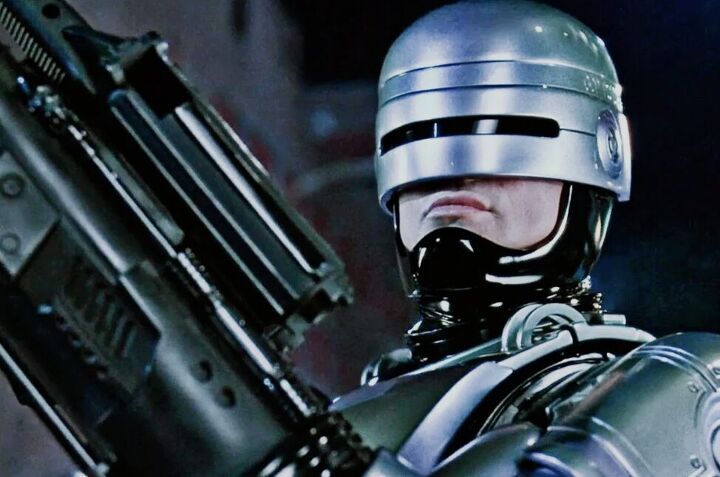




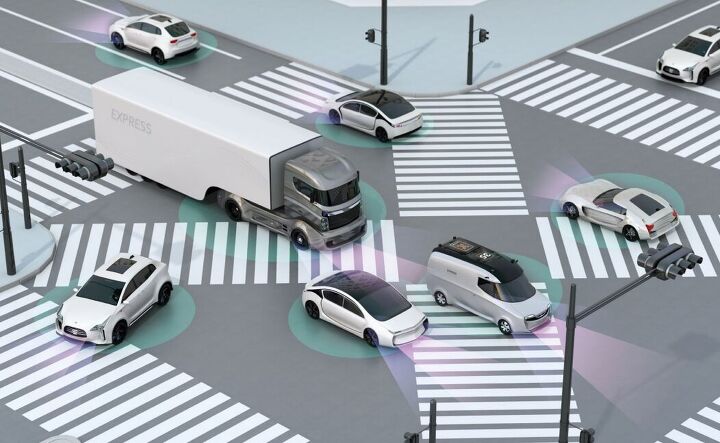

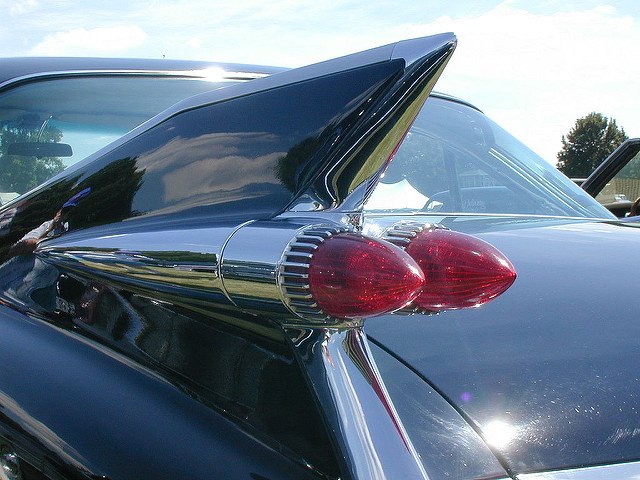




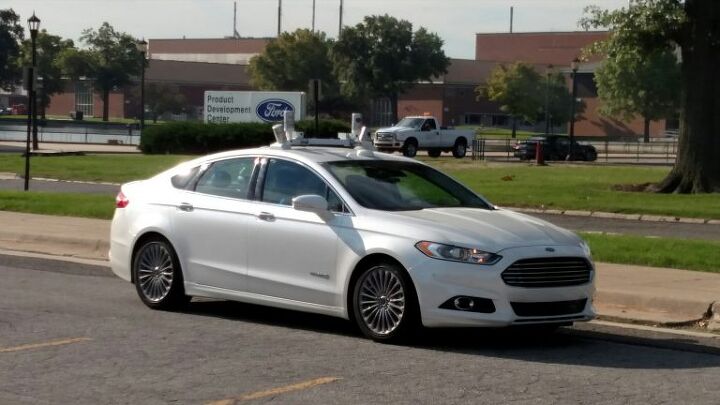









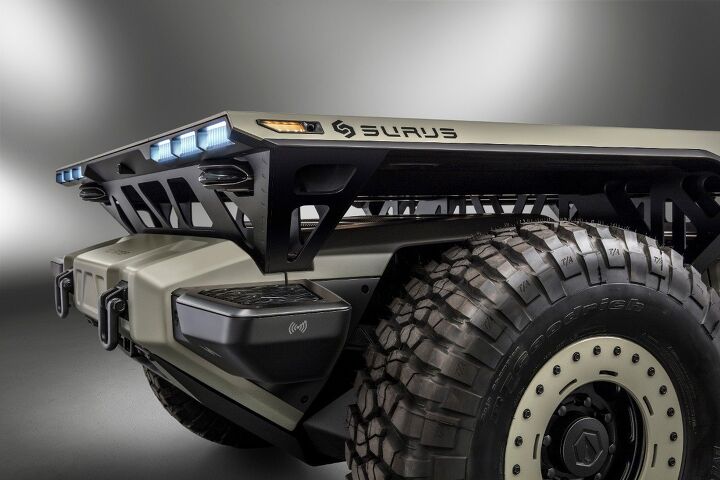


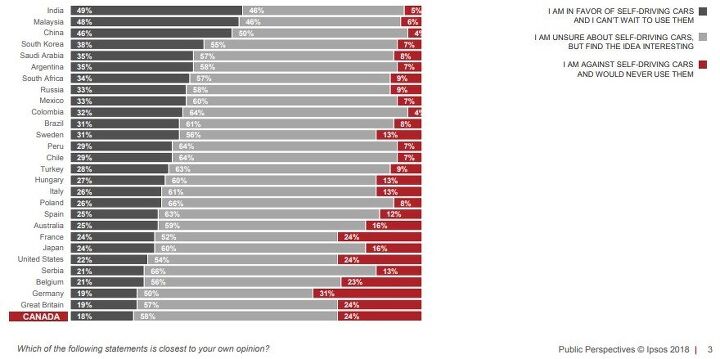





![LIDAR Supplier Defends Hardware, Blames Uber for Fatal Crash [Updated]](https://cdn-fastly.thetruthaboutcars.com/media/2022/06/30/8787804/lidar-supplier-defends-hardware-blames-uber-for-fatal-crash-updated.jpg?size=720x845&nocrop=1)


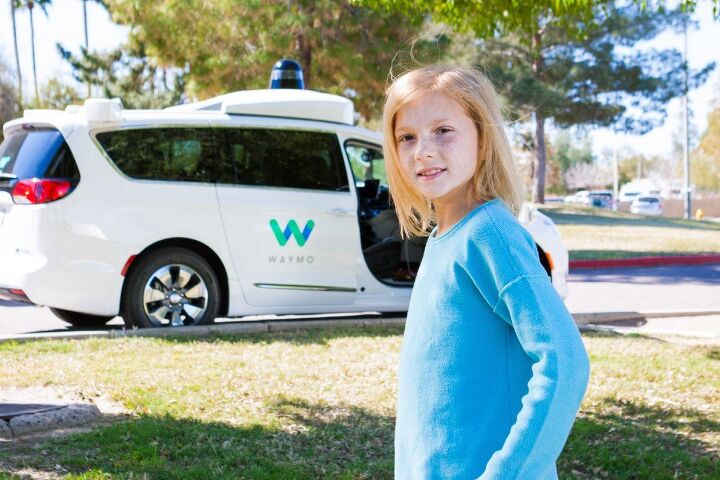

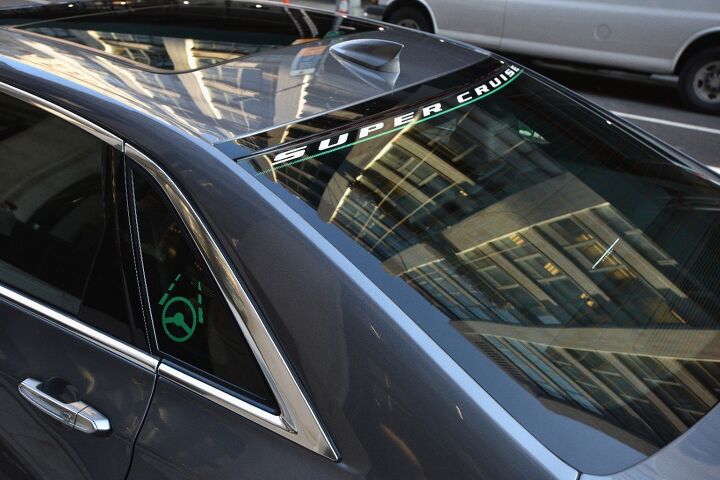
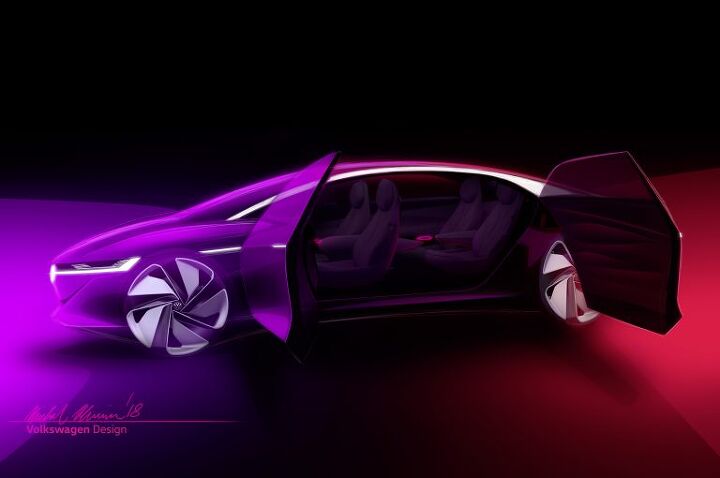



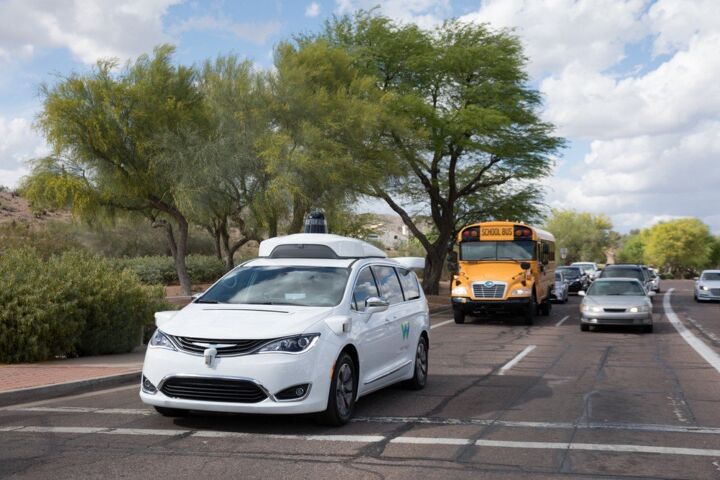

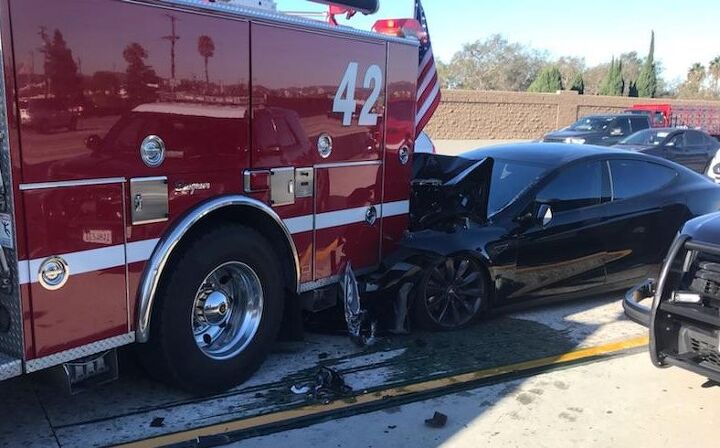

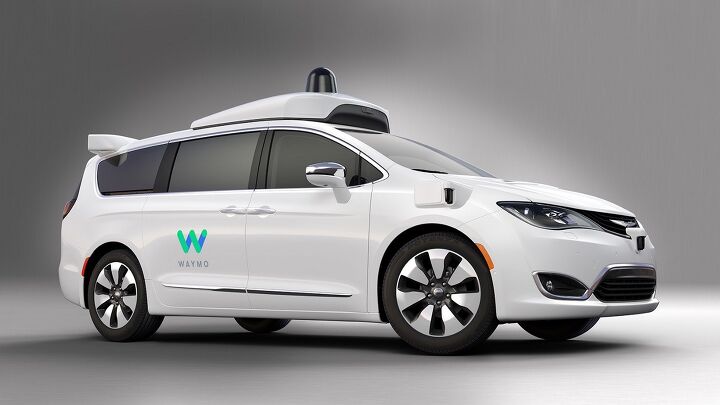



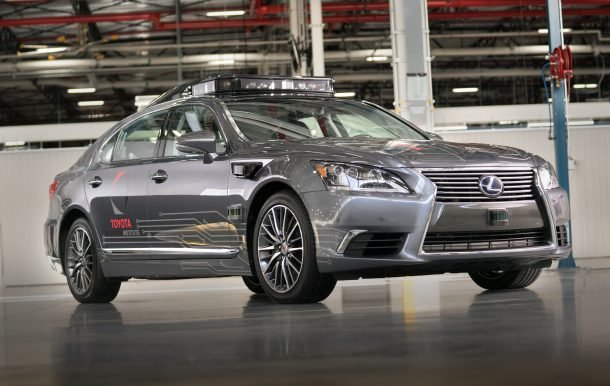


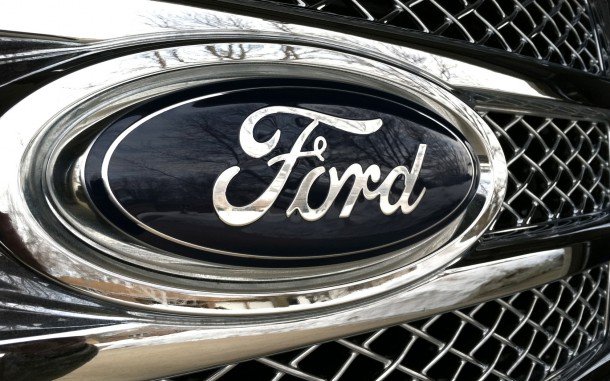














Recent Comments